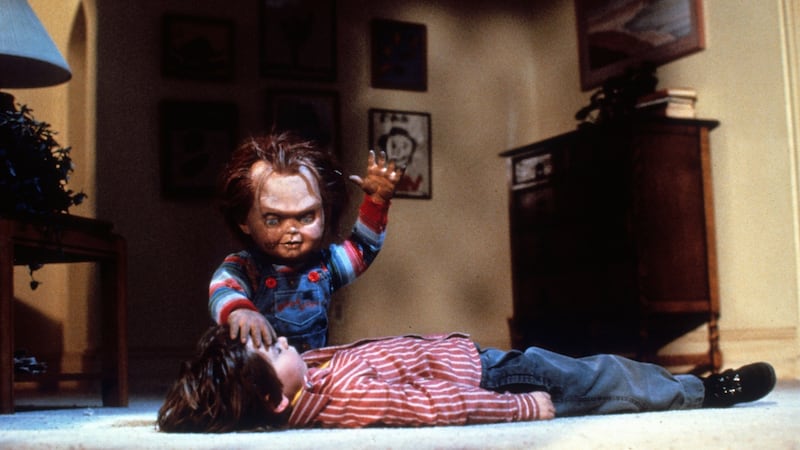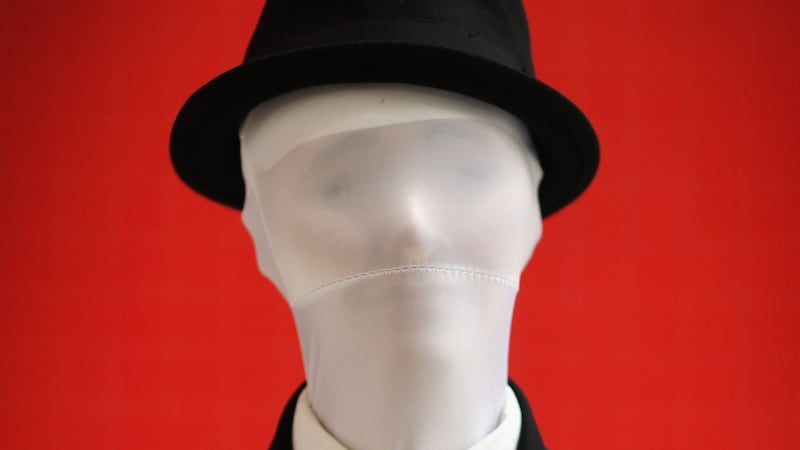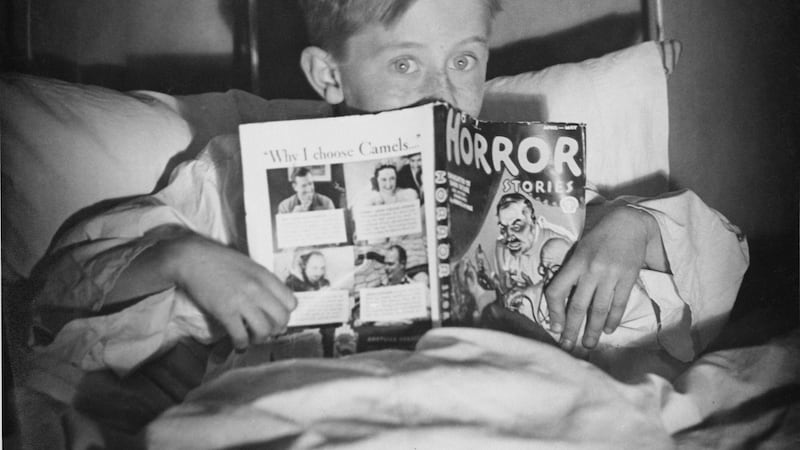Allegations of demonic entities. Possessed children. Strange and powerful images imbued with a supernatural capacity. Unsupervised prepubescents playing dangerous games. Parents expressing disapprobation while seeking the suppression of dark powerful forces. While one could be forgiven for assuming my opening gambit was indeed a description of the hysteria of the 1692 Salem witch trials which resulted in the hanging of 19 innocent men and women, you would be wrong.
You could also be forgiven for thinking I was referring to the 1954 investigations into American horror comics which were charged with harbouring communist propaganda, increasing juvenile delinquency and corrupting the nation’s youth. You would also be wrong in thinking I was referring to the 1980s video nasty controversy in the UK in which low-budget horror films were branded “evil” and “demonic” due to their alleged harmful effects on children.
Neither is it the Satanic panic of the same era in which the morality of an entire generation was under threat from an unseen and indeed unfounded danger of Satanic worship. Nor is it the perverse tabloid theatre which ensued following the murder of toddler James Bulger in 1992 or the media circus which accompanied the 2014 "Slender Man stabbing", in which12-year-old Payton Leutner was attacked and left for dead by two of her friends.
Striking fear into the hearts of parents more recently than all these was February’s Momo challenge, a manifestation of societal anxieties about emerging technologies, parental fallibility and our predilection for prizing emotional truths over reason.
Already we feel a little silly. How could we have collectively fallen for what amounted to a viral hoax? What was it about the Momo challenge that seemed to capture both the fears and imagination of the public as it spread panic and outrage in equal measure? How did we get caught out so badly? Perhaps it wasn’t entirely our own fault. What about all that media coverage quoting expert after expert about how harmful this Momo challenge could be to your children? How could they have gotten it so wrong? And what about the reports of the Momo assisted suicides themselves? Surely these took place? And what about the school email which shrieked “MOMO DANGER” and warned parents of this “very serious online game which encourages páistí to self-harm”.
How could the schools have gotten it so wrong? Well they did get it wrong. Dead wrong. No children were ever harmed in the making of such a challenge. But the unsubstantiated narrative of harm which grew around this case and countless earlier panics around the morality and safety of our children were very real.

During the Bulger case, a powerful and compelling narrative emerged within the media, suggesting that a fictional character, the ghoulish horror puppet Chucky from Child's Play 3, had influenced children to commit such a heinous crime. A decade before, an even more insidious narrative pertaining to Satanic ritual abuse in American day-cares had emerged. Beginning with the McMartin pre-school trial in California in 1983, Satanic panic penetrated a range of popular culture products such as music, film and even board games. Having grown out of a cultural anxiety relating to the increased number of children in childcare in the 1970s as a result of women leaving the home to take up careers, anxieties surrounding childcare were ignited in the wake of the McMartin ritual abuse allegations.
During the longest criminal trial in American history, running from 1987-1990, various members of the McMartin family and staff at the day-care centre spent upwards of five years in prison for crimes of ritual abuse committed against children in their care. All the claims were unfounded and eventually quashed. But not before the ritual abuse cases and the alleged victims were paraded in the news media, featured on talk shows and even reached the hallowed grounds of the Oprah Winfrey Show, where "a nice Jewish girl" answered probing questions from Winfrey about baby sacrifices and cannibalism.
Let’s be quite clear; none of this ever happened. It was a perfect confluence of tricksters, media sensationalism and mental health issues creating a “truth” which reflected, revealed and facilitated the anxiety of an entire generation of parents that the bogeyman was a tangible and therefore controllable force of evil bound up in the figure of the Black Sabbath-listening, black T-shirt-wearing teenage Satanist. We believe that could never happen in this day and age. Only it did, it does and it will continue.
Slender Man
Reminiscent in some respects of the Bulger case two decades previously, in which Chucky become a central figure, the Slender Man stabbing invoked similar readings of fictional characters as real threats. Like Chucky, Slender Man was (and to a certain extent continues to be) treated as the personification of a larger threat to children. Within days of the Wisconsin case breaking, online horror fiction forums and the internet in its entirety were framed within a narrative of harm.

While highlighting the fictionality of Slender Man, each one of these reports sought to emphasise the role an internet meme played in the lives of what appear to have been two very disturbed girls. Just as the attack on Child’s Play 3 broadened to include a denunciation of the entire genre, the meme’s perceived potential to harm was similarly extended beyond its online horror story (or Creepypasta) origins to viewing the internet in its entirety as a dangerous place for children.
If we took a moment to investigate the latest panic, I would like to think that nobody really believed that Momo could actually corrupt their child or cause them to do harm. That a viral meme could actually reach out from its cyber world is surely the stuff of horror fiction. But instead of viewing this bogeyman as a viral allegory about teenage and preteen suicide, we assumed that the threat was real. Wave after wave of unsubstantiated reports, expert opinions and media pundits moved by the sheer horror of it all were compelled to speak up for the vulnerable.
Brought to a boil early this year, all of these expert voices and reports began to bubble and froth as superfluous “facts” and coincidences convulsed and unlocked, providing us with the truth we could handle. But truth, that drunken cousin of fact, is simply whatever works while offering us a semi-coherent reality which seeks to maintain a paralysing fear that there is no real coherence in this world.
Like the Momo challenge, the Slenderman stabbing in 2014 sought to implicate a fictional creation in the attempted murder of a young girl. In both cases, it was reported that such a creation exerted its powers over young people to cause them to harm themselves and others. In the case of the Slenderman stabbing, pundits, experts and the media contributed to this narrative of harm at the absolute expense of two very damaged girls. The fictional meme was described as the motivating force behind the attempted killing. On reflection, however, it is easy to see that their infatuation with Slenderman was actually a symptom of their psychosis and not the cause of it.
Mainstream approval
The horror genre is enjoying something of a golden age in terms of mainstream approval, but has traditionally endured some of the most ferocious moral attacks. Since its Gothic inception in the 18th century right up to the recent Momo challenge, the genre across a range of mediums has been accused of causing harm. Though no conclusive evidence exists on this, one of the keys tropes of the genre is the representation of societal ills as a means of release, exploration and belonging. Consequently, children are often drawn to horror because it explores extremely complex issues through the accessible filter of fiction.

Take, for example, the horror comics of the 1950s. Though branded harmful due to their hyperbolic viscerality, they included some of the only explorations of child abuse published in an era which barely recognised such abuses as criminal. Similarly, while Child’s Play 3 was cited as a possible motivating factor in the Bulger murder (a line of inquiry which was eventually thrown out), at its core the film is ultimately about child abuse and overcoming childhood adversity. But what is the point of something such as the Momo challenge?
An amalgam of blogs, vlogs, media reports and moral outrage – what the Momo challenge truly represented was fear. It wasn’t fear of a strange image nor a risk of suicide but an intangible and inarticulate fear of what we don’t fully understand. Behind most moral panics lies an agenda to push certain values rooted in taste, class, race, gender, faith, age etc.
But what lies at the heart of these panics is fear. Fear that you cannot protect your children from an outside influence. Fear that the internet, that wide dank abyss, hides a myriad of unidentifiable threats to children. Fear that no matter what measures you put in place, you never have full control. No matter how unsavoury you may find them, cultural products, be they horror comics or viral memes, are manifestations of these fears and not the thing to fear.
Horror draws from and on our displaced anxieties about life and helps to confront such fears. Horror puts a face on our fear and gives it a name. But instead of confronting the message, we kill the messenger. The fear grows and facilitates these panics as they rise to a crescendo, only to fade into oblivion until we find something else to latch our inarticulate fears to.
Recently a friend was on a plane journey. Buffeted by extreme but controllable turbulence, she watched as the passengers around her went berserk. Doing her best not to join them, she fixed her stare upon the flight attendants and studied their reactions. If they began to panic, she knew that was her cue to do the same. Concentrating on their frustrated yet calm faces, she felt relatively at ease until the plane landed.
Likewise, during these moral panics, children look to their parents for comfort and reassurance that it’s only a story. In this case, parents looked to schools, child experts and the media for guidance, only to be told the bogeyman was real. In displacing these fears onto memes and monsters they claw back control, regardless of how fictional that control is. Yes, the world is a scary place. Yes, danger lurks around every corner. But won’t somebody please think of the parents. They’re scaring the kids.

















